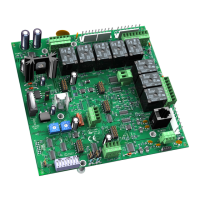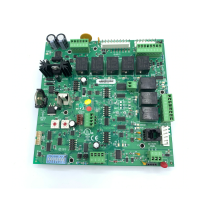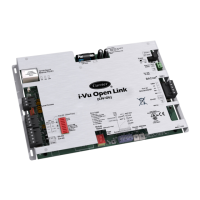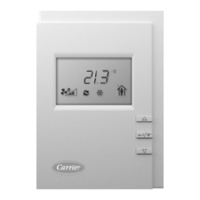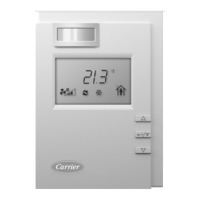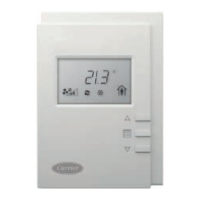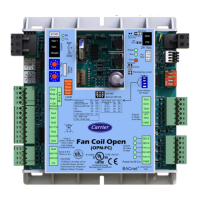Sequence of Operation
RTU Open v3 CARRIER CORPORATION ©2019
Installation and Start-up Guide All rights reserved
58
If no heating or cooling is required or the current air source mode is satisfied, the VVT Master calculates the
weighted average of the occupied and unoccupied heating and cooling setpoints. It also calculates a zone
temperature that is midway between the setpoints (occupied or unoccupied based on the system’s current
occupancy status). This information, plus the occupancy status, is sent to the air source so that its current mode is
disabled and the unit ceases heating or cooling operation. If the system is occupied, the air source fan and OA
damper, if applicable, operate to maintain proper ventilation.
Linkage also provides a safety and system override function during any RTU heating mode. Whenever the RTU
Open is in a heating mode, the control monitors the supply air temperature (SAT). Normally (and initially) during
heating, the RTU sends the Linkage Heat mode which causes only those zones that require heat to modulate their
dampers to utilize the heated primary air. If during heating the SAT increases and exceeds the Maximum Heating
SAT minus 7
°F, Linkage transmits the Linkage Warm-up mode to all terminals. This allows more zones to utilize
the heated primary air and attempts to prevent any further SAT increase. Finally, if the SAT rises above the
Maximum Heating SAT, Linkage transmits the Linkage Pressurization mode to maximize the amount of airflow
through the RTU and prevent any safety limit switches from operating.
CAUTION It is important to properly set the value for the Maximum Heating SAT to match the value
specified from the equipment product data recommendations. Many rooftops have heat capacity that will
provide a higher heat rise, resulting in an SAT in excess of the Maximum Heating SAT default value (120°F).
Linkage air source mode determination
Linked air source modes
– In a linked system, the air source determines its operating mode and qualifies that
mode based on its own SAT. The following modes can be sent by the air source depending on its capability and
configuration:
Air source fan is off.
Air source fan is on and providing first cycle of heat when changing from
unoccupied to occupied. It may also be used as a safety to increase airflow
during a heating mode.
Air source fan is on and providing heat.
Air source fan is on and providing cooling using only the economizer and
usually during an unoccupied period.
Air source fan is on and providing cooling.
Air source supply fan is on usually as a result of a fire-life safety input being
active. It may also be used as a safety to increase airflow during a heating
mode.
Air source supply fan is off usually as a result of a fire-life safety input being
active.
Air source fan is on and providing ventilation without heating or cooling.
See the air source’s installation manual for more specific operation.
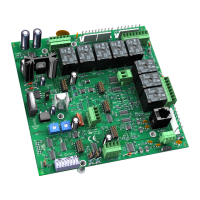
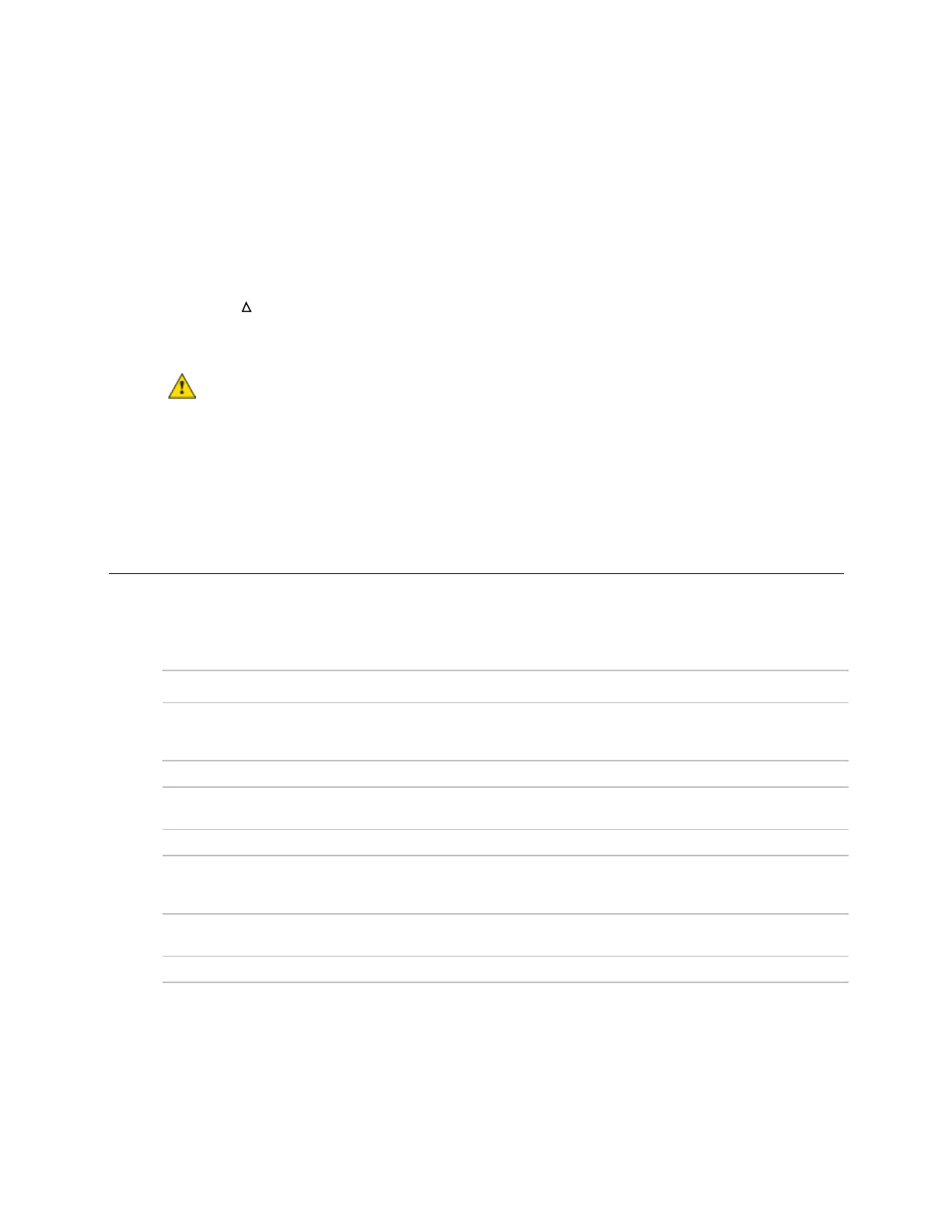